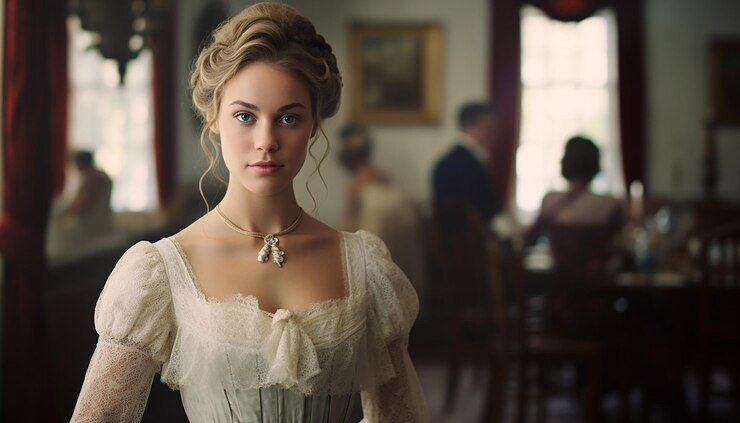“My Last Duchess” by Robert Browning
“My Last Duchess” by Robert Browning is a dramatic monologue presented in a single stanza, but for clarity, we will break it down into segments and provide a detailed explanation for each:

Segment 1 (Lines 1-5)
That’s my last Duchess painted on the wall,
Looking as if she were alive. I call
That piece a wonder, now: Frà Pandolf’s hands
Worked busily a day, and there she stands.
Will’t please you sit and look at her?
Explanation
The duke, the speaker of the poem “My Last Duchess”, directs the listener’s attention to a portrait of his late wife, the duchess. He comments on how lifelike the painting appears, attributing this to the skill of the artist, Frà Pandolf. The duke’s invitation to the listener to sit and observe the portrait sets the stage for the monologue.
Segment 2 (Lines 6-15)
I said
“Frà Pandolf” by design, for never read
Strangers like you that pictured countenance,
The depth and passion of its earnest glance,
But to myself they turned (since none puts by
The curtain I have drawn for you, but I)
And seemed as they would ask me, if they durst,
How such a glance came there; so, not the first
Are you to turn and ask thus.
Explanation
The duke reveals that he deliberately mentions the artist’s name because people are often struck by the duchess’s expression in the portrait and wonder about it. He points out that he alone controls who sees the portrait by drawing a curtain over it, emphasizing his possessiveness and control.
Segment 3 (Lines 15-21)
Sir, ’twas not
Her husband’s presence only, called that spot
Of joy into the Duchess’ cheek: perhaps
Frà Pandolf chanced to say, “Her mantle laps
Over my lady’s wrist too much,” or “Paint
Must never hope to reproduce the faint
Half-flush that dies along her throat.”
Explanation
The duke speculates on what might have caused the duchess to blush, suggesting that it wasn’t just his presence that made her happy. He hints that innocent comments from the artist could have brought joy to her, indicating his jealousy and insecurity about her interactions with others.
Segment 4 (Lines 21-34)
Such stuff
Was courtesy, she thought, and cause enough
For calling up that spot of joy. She had
A heart—how shall I say?—too soon made glad,
Too easily impressed; she liked whate’er
She looked on, and her looks went everywhere.
Sir, ’twas all one! My favour at her breast,
The dropping of the daylight in the West,
The bough of cherries some officious fool
Broke in the orchard for her, the white mule
She rode with round the terrace—all and each
Would draw from her alike the approving speech,
Or blush, at least. She thanked men,—good! but thanked
Somehow—I know not how—as if she ranked
My gift of a nine-hundred-years-old name
With anybody’s gift.
Explanation
The duke criticizes the duchess for being too easily pleased and too friendly with everyone she encountered. He feels that she valued everything equally, from simple pleasures like the sunset or a gift of cherries to his prestigious heritage. This, to him, diminished the significance of his noble lineage and his gifts.
Segment 5 (Lines 35-47)
Who’d stoop to blame
This sort of trifling? Even had you skill
In speech—which I have not—to make your will
Quite clear to such an one, and say, “Just this
Or that in you disgusts me; here you miss,
Or there exceed the mark”—and if she let
Herself be lessoned so, nor plainly set
Her wits to yours, forsooth, and made excuse,
—E’en then would be some stooping; and I choose
Never to stoop. Oh sir, she smiled, no doubt,
Whene’er I passed her; but who passed without
Much the same smile? This grew; I gave commands;
Then all smiles stopped together.
Explanation
The duke reflects on his unwillingness to “stoop” or humble himself to correct the duchess’s behavior. He suggests that even if he had tried to explain his displeasure, it would have been beneath him to do so. Ultimately, he reveals that he “gave commands” which led to the cessation of her smiles, implying that he had her killed.
Segment 6 (Lines 47-56)
There she stands
As if alive. Will’t please you rise? We’ll meet
The company below, then. I repeat,
The Count your master’s known munificence
Is ample warrant that no just pretense
Of mine for dowry will be disallowed;
Though his fair daughter’s self, as I avowed
At starting, is my object. Nay, we’ll go
Together down, sir. Notice Neptune, though,
Taming a sea-horse, thought a rarity,
Which Claus of Innsbruck cast in bronze for me!
Explanation
The duke shifts the conversation back to the present, asking the listener to join him in rejoining the company downstairs. He assures the envoy that his demands for a dowry will be met, but emphasizes that his primary interest is in the count’s daughter, his next prospective wife. As they leave, he points out another art piece, a bronze statue of Neptune taming a sea-horse, underscoring his love for art and his need for control and dominance.
In summary, “My Last Duchess” is a powerful monologue that reveals the duke’s controlling, jealous, and ruthless nature, using the portrait of his late wife to reflect on themes of power, possession, and the objectification of individuals.
#My Last Duchess #My Last Duchess #My Last Duchess #My Last Duchess #My Last Duchess #My Last Duchess #My Last Duchess
Read More
Critical Analysis of “My Last Duchess” by Robert Browning
Wordsworth and His Treatment Of Nature
Wordsworth and His Love for Nature
Introduction to Fiction and Non Fiction
Of Death — Francis Bacon (Text)
Of Truth Critical Analysis by Sir Francis Bacon
Of Truth by Francis Bacon Summary
Visit Us on our Facebook Page:




